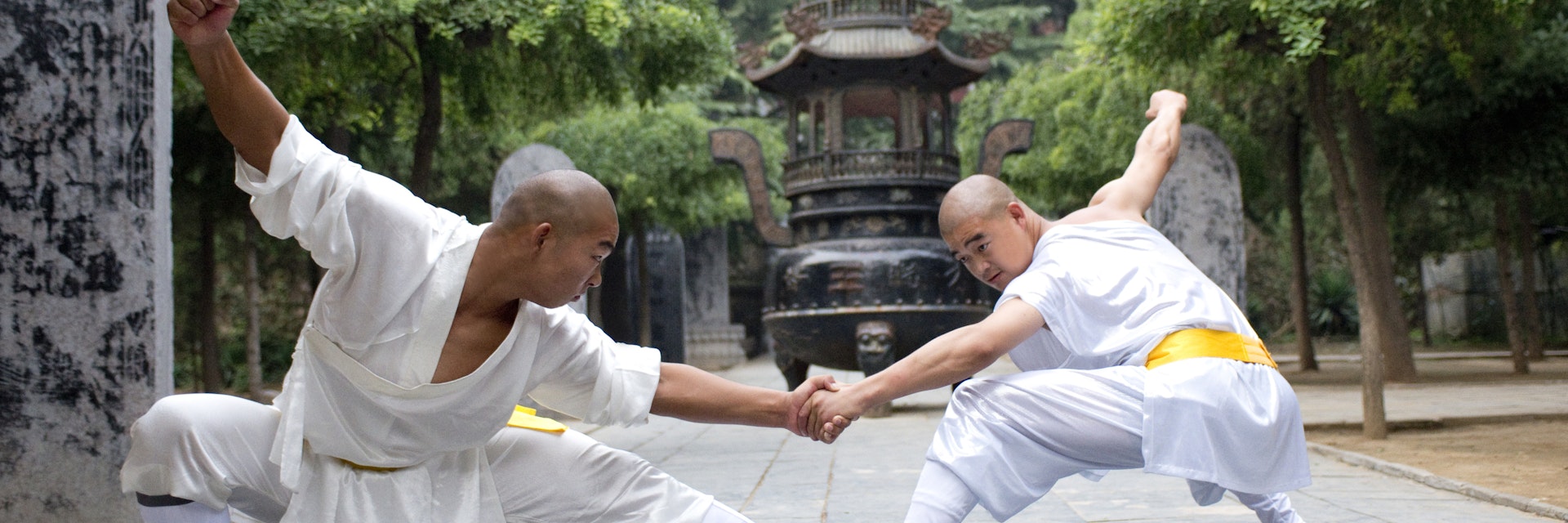The largely rebuilt Shaolin Temple is a commercialised victim of its own incredible success. A frequent target of war, the ancestral home of wǔshù was last torched in 1928, and the surviving halls – many of recent construction – are today assailed by relentless waves of selfie-shooting tour groups. The temple’s claim to fame, its dazzling gōngfū (kung fu) based on the movements of animals, insects and sometimes mythological figures, guarantees that martial arts clubs around the world make incessant pilgrimages.
The temple is 600m along from the turnstiles. Many buildings, such as the main Daxiong Hall (大雄宝殿, Dàxióng Bǎodiàn; reconstructed in 1985), burned to the ground in 1928. Although the temple seems to have been founded in approximately the year 500 (accounts vary), some halls only date back as far as 2004. Among the oldest structures at the temple are the decorative arches and stone lions, both outside the main gate.
At the very rear, the West Facing Hall (西方圣人殿, Xīfāng Shēngrén Diàn) has depressions in the floor, famously (and apocryphally) the result of generations of monks practising their stance work, and huge colour frescoes. Always be on the lookout for the ubiquitous Damo (Bodhidharma), whose bearded Indian visage gazes sagaciously from stelae or peeks out from temple halls.



